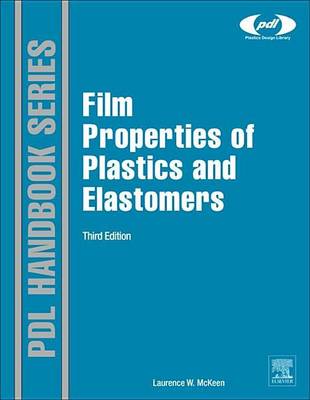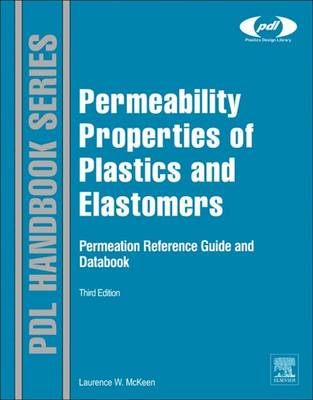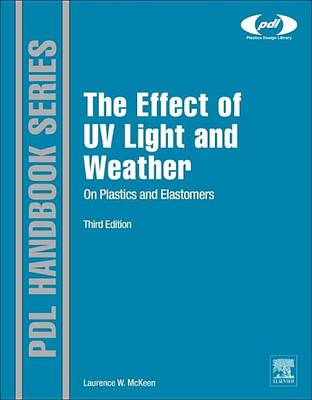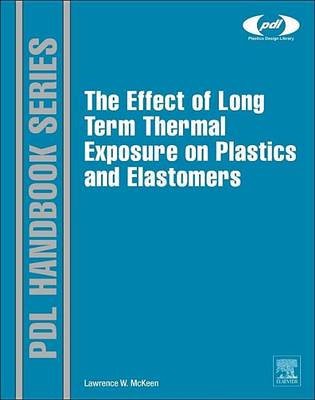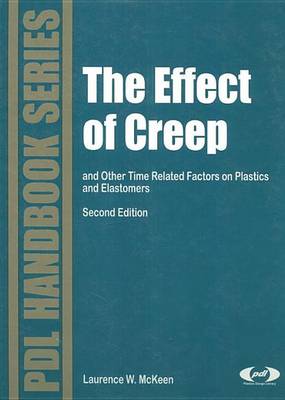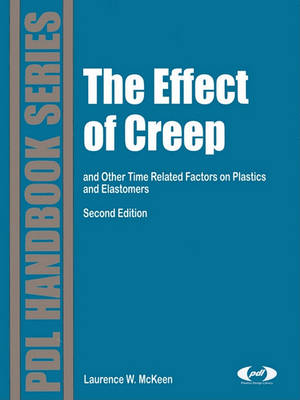Plastics Design Library
8 total works
Data are presented on the characteristics of 47 major plastic and elastomer packaging materials. New to this edition, the resin chapters each contain textual summary information including category, general description, processing methods, applications, and other facts as appropriate, such as reliability, weatherability, and regulatory approval considerations for use in food and medical packaging. Extensive references are provided. The resin chapter material supplier trade name product data are presented in graphical and tabular format, with results normalized to SI units, retaining the familiar format of the 1st edition and allowing easy comparison between materials and test conditions.
The Effect of Sterilization on Plastics and Elastomers
by Laurence W. McKeen
The third edition includes new text chapters that provide the underpinning knowledge required to make best use of the data. Larry McKeen has also added detailed descriptions of sterilization methods for most common polymer classes such as polyolefins, polyamides, polyesters, elastomers, fluoropolymers, biodegradable plastics. Data has been updated throughout, with expanded information on newer classes of polymer utilized in medical devices and sterile packaging, such as UHMWPE, high temperature plastics (PEEK, PES, PPS, etc.), PBT, PETG, etc. The resulting Handbook is an essential reference for Plastics Engineers, Materials Scientists and Chemists working in contexts where sterilization is required, such as food packaging, pharmaceutical packaging and medical devices.
Effect of UV Light and Weather on Plastics and Elastomers
by Laurence W. McKeen
The third edition includes new text chapters that provide the fundamental knowledge required to make best use of the data. Author Larry McKeen has also added detailed descriptions of the effect of weathering on the most common polymer classes such as polyolefins, polyamides, polyesters, elastomers, fluoropolymers, biodegradable plastics, etc., making this book an invaluable design guide as well as an industry standard data source.
Effect of Long Term Thermal Exposure on Plastics and Elastomers
by Laurence W. McKeen
High heat environments are common in automotive, oil and gas, household appliances, coatings, space and aeronautics and many more end uses. As a result, thermal stability data are critically important to engineers designing parts particularly that replace metals, work that is common today as they look for ways to reduce weight. The data tables in this book enable engineers and scientists to select the right materials for a given product or application across a wide range of sectors.
Several polymer classes are covered, including polyolefins, polyamides, polyesters, elastomers, fluoropolymers, biodegradable plastics and more, saving readers the need to contact suppliers. The book also includes introductory sections to provide background on plastic/polymer chemistry and formulation and plastic testing methods, providing the knowledge required to make best use of the data.
The Effect of Creep and Other Time Related Factors on Plastics and Elastomers
by Laurence W. McKeen
This new edition also has been reorganized from a polymer chemistry point of view. Plastics of similar polymer types are grouped into chapters, each with an introduction that briefly explains the chemistry of the polymers used in the plastics. An extensive introductory chapter has also been added, which summarizes the chemistry of making polymers, the formulation of plastics, creep-testing, test methods, measurements, and charts, as well as theory and plastic selection.
Each chapter is generally organized by product and concludes with comparisons of brand or generic products. The appendices include a list of trade names, plastics sold under those names, and manufacturer. A list of conversion factors for stress measures is also included.
ABOUT THE AUTHOR
Laurence W. McKeen earned a B.S. in Chemistry from Rensselaer Polytechnic Institute in 1973 and a Ph.D. in 1978 from the University of Wisconsin. He began his career with DuPont in 1978 as a mass spectroscopist, but moved into product development in the Teflon (R) Finishes group in 1980. Dr. McKeen has accumulated over 28 years of experience in product development and applications, working with customers in a wide range of industries, which has led to the creation of dozens of commercial products.
The effect of radiation on electrical properties is also included. Supporting introductory chapters explain the key concepts of radiation, including the physical, mechanical, and thermal properties of plastics and elastomers. This is a vital resource for plastics engineers, product designers, and R&D professionals, working on products or parts for radioactive environments, as well as engineers and scientists in the medical, nuclear, and radiation processing industries. The book also supports researchers and scientists in plastics engineering, polymer processing and properties, polymer and coatings chemistry, materials science, and radiation.
